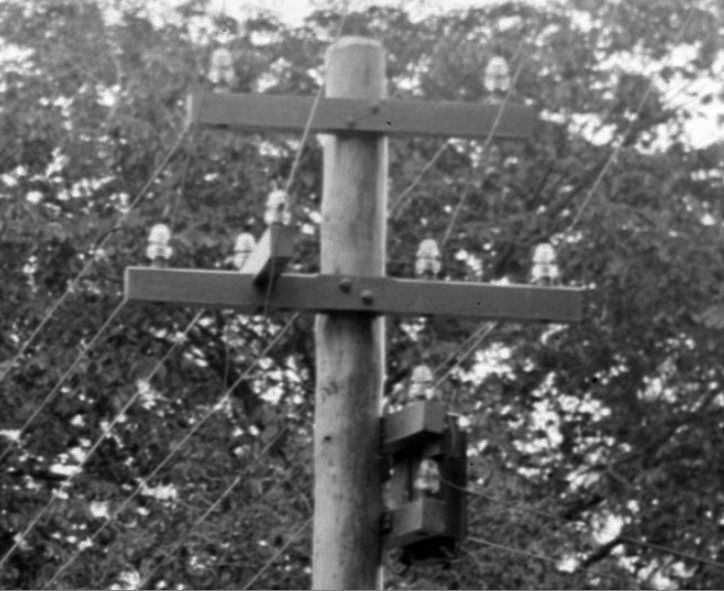
Typically 1,100 or 2,200 volts primary was commonplace for residential distribution circuits at the beginning of the 20th century with 100 to 110 volts secondary. Early distribution was provided by dry-type transformers which served only one or two customers owing to their capacity limits. These units inherently had significant line losses. This was a concern throughout the electric utility industry. As years progressed, capacities were increased and losses decreased by transformer manufacturers. You will read more about some of these advancements in coming postings here on ICON. Shown is a typical early 1890s distribution transformer (lower on pole supported by two small crossarms) with glass insulators adorning the crossarms, in Hingham, MA. Most appear to be CD 134 Pennycuicks. Diamond-Ps, C.E.L. Co. and their unembossed counterparts have been found upon the town's electric lines through the decades. During 1899-1900 the issue of line losses was addressed by Mr. Wallace Corthell, general manager of the lighting plant. Vast improvements for reliable and economical service throughout the town's system were continually planned and made. When Hingham purchased the town's electric system in 1894, 62 percent of the energy between the generation station in neighboring East Weymouth was lost, largely due to an over-abundance of old, small-rated transformers. During 1900 and subsequent years a program commenced whereby one larger transformer was substituted for up to several smaller units in many neighborhoods. This improvement along with more efficient types significantly reduced such losses in following years. These investments enabled Hingham and all other utilities operating such improvement programs to continue with low electricity rates. System-wide transformer consolidation and upgrading throughout the year brought system losses down to 43 percent. As stated in one of my earlier posts, Hingham is among 40 consumer-owner electric utilities in Massachusetts. Profits accrued are typically given to the customers as billing discounts for prompt payment. During 1899 the discount was increased by 5% to 25 percent and continued through 1900. Electrical malfunctions originating at the Weymouth Light and Power Company generating facility (where the town's two series lighting loops were connected from) during the spring and early summer caused problems and much inconvenience to many of the town's 392 street lights. Most of the damage was blown-out bulbs. The Weymouth company furnished new ones at no charge. At the end of 1899 the Light Plant had 199 customers with 4,143 bulbs connected. During 1900, 22 customers were added with a year-end total of 4,632 lightbulbs in customers' premises. The general manager of the Light Plant stated in his 1900 report: "Economically used, it is not an expensive light, and there are few companies or towns in this state where current is sold at as low as a rate as in Hingham". Periodically old photographs of this town's electric utility system through the years will be posted here. Accompanied with some technical information about early line construction, is some fokelore that is fun to read as the utility was picking up speed in their early days. Please refer to [id=597271496] for more detail about this series. |